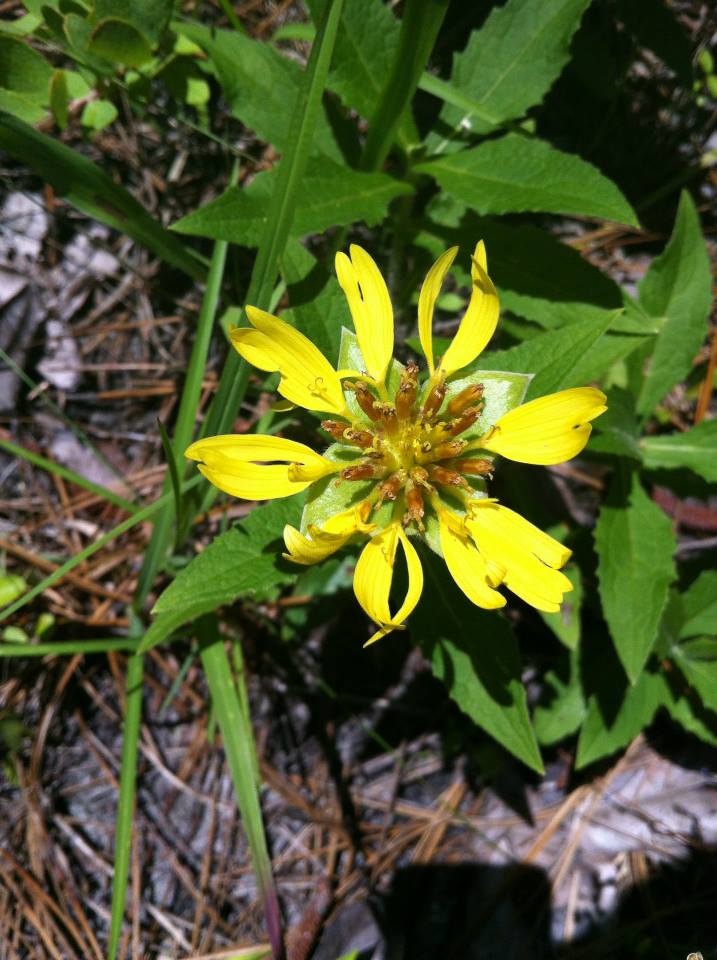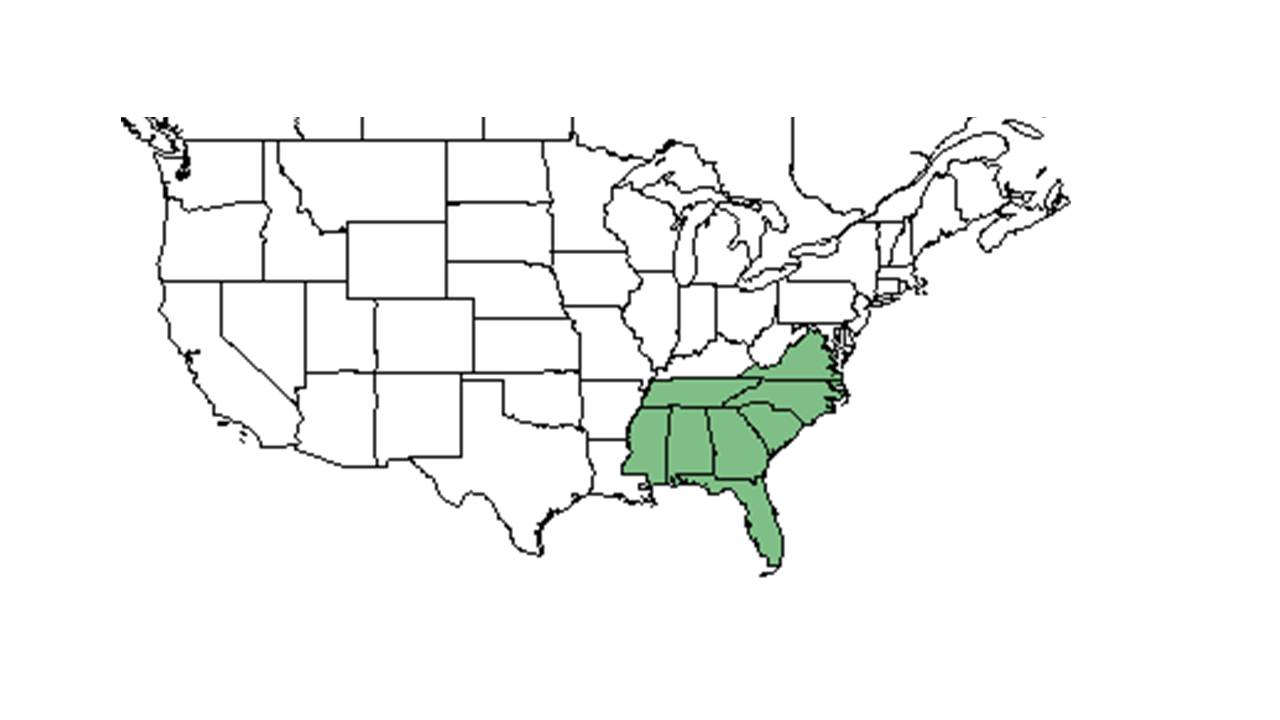Tetragonotheca helianthoides
| Tetragonotheca helianthoides | |
|---|---|

| |
| Photo taken by Michelle M. Smith | |
| Scientific classification | |
| Kingdom: | Plantae |
| Division: | Magnoliophyta – Flowering plants |
| Class: | Magnoliopsida – Dicotyledons |
| Order: | Asterales |
| Family: | Asteraceae ⁄ Compositae |
| Genus: | Tetragonotheca |
| Species: | T. helianthoides |
| Binomial name | |
| Tetragonotheca helianthoides L. | |

| |
| Natural range of Tetragonotheca helianthoides from USDA NRCS Plants Database. | |
Common names: Pineland nerveray, Pineland-ginseng, Squarehead
Contents
Taxonomic notes
Description
A description of Tetragonotheca helianthoides is provided in The Flora of North America.
Distribution
Ecology
Habitat
In the Coastal Plain in Florida, T. helianthoides has been found growing in the shade of a oak-hickory forest; loamy sand along the edge of a oak-pine-sassafras secondary woodland; loamy sand along wet pine flatwoods; scrub oak woods; mixed oak woodland; mixed deciduous flatwoods; longleaf pine slope above a Chamaecyparis thicket; scrub oak sandridge; wet depressions; burned longleaf pinewoods; sandy oak-pine forested uplands; loamy sand of pine-oak slopes above small seepage slopes; pine-turkey oak woods; and slash pine-scrub oak flats; and the ecotone between mixed hardwoods and fire-maintained pine-oak woods. [1] [2] It has been observed to grow in disturbed habitats such as powerline corridors, open fields, and roadside ditches.
Substrate types include sand, red sandy soil, gravel, and loamy sand. [1] Associated species include Myrica, Liquidambar, and Chamaecyparis. [1]
Phenology
It has been observed flowering and fruiting April through July. [1]
Fire ecology
Arata noted that T. helianthoides appeared in late May/ early June after burning in mid-winter. [3]
Conservation and management
Cultivation and restoration
Photo Gallery
References and notes
- ↑ 1.0 1.1 1.2 1.3 Florida State University Robert K. Godfrey Herbarium database. URL: http://herbarium.bio.fsu.edu. Last accessed: July 2015. Collectors: Loran C. Anderson, Gary R. Knight, R.K. Godfrey, Sidney McDaniel, D. B. Ward, D. Burch, Richard S. Mitchell, B. L. Turner, R. Kral, Wilson Baker, William T. Gillis, Ira L. Wiggins, Dorothy B. Wiggins, Gwynn W. Ramsey, H. L. Stripling, Carol H. Beck, Robert F. Martin, R. A. Norris, R. Komarek, Lisa Keppner, Bill Boothe, Marcia Boothe, Annie Schmidt, A. Johnson, M. Jenkins, B. Cole Irvin. States and Counties: Florida: Alachua, Calhoun, Columbia, Escambia, Gadsden, Holmes, Jackson, Lafayette, Lake, Leon, Madison, Marion, Santa Rosa, Wakulla, Walton, Washington. Georgia: Grady. Compiled by Tall Timbers Research Station and Land Conservancy.
- ↑ Heuberger, K. A. and F. E. Putz. 2003. Fire in the suburbs: ecological impacts of prescribed fire in small remnants of longleaf pine (Pinus palustris) sandhill. Restoration Ecology 11:72-81.
- ↑ Arata, A. A. 1959. Effects of burning on vegetation and rodent populations in a longleaf pine-turkey oak association in north central Florida. Quarterly Journal of the Florida Academy of Sciences 22:94-104.